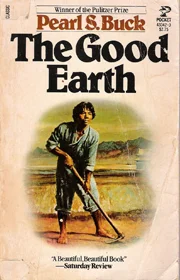
“The Good Earth” by Pearl S. Buck follows the journey of Wang Lung, a humble farmer in rural China. Wang Lung marries O-lan, a diligent and resourceful woman, and together they navigate the challenges of famine, poverty, and societal changes during the late 19th and early 20th centuries. Through hard work and shrewd decisions, Wang Lung rises from poverty to prosperity, accumulating land and wealth. The novel explores themes of family, the deep connection between people and the land, and the cyclical nature of life. As Wang Lung grapples with success and its consequences, “The Good Earth” offers a poignant reflection on the impact of societal transformations on individuals and their values.
Read The Good Earth Flipbook:
[Not yet available.]
Listen to The Good Earth Audiobook:
Title: The Good Earth
Author: Pearl S. Buck
Setting: The story is set in rural China during the late 19th and early 20th centuries.
Plot Summary:
Characters:
Themes:
Awards:
Impact:
Adaptations:
Legacy:
Historical Context: “The Good Earth” was published in 1931 and is set against the backdrop of the turbulent times in China, including the end of the Qing Dynasty and the early years of the Republic of China.
Pulitzer Prize: The novel won the Pulitzer Prize for Fiction in 1932, marking a significant achievement for Pearl S. Buck.
Bestseller: “The Good Earth” became a bestseller and remained on the bestseller list for almost two years after its release.
Nobel Prize: Pearl S. Buck was awarded the Nobel Prize in Literature in 1938, largely influenced by the success of “The Good Earth.”
Cultural Impact: The novel played a role in shaping Western perceptions of China during a time when there was limited exposure to Chinese culture in the West.
Film Adaptation: In 1937, the novel was adapted into a successful film, bringing the story to a broader audience.
Legacy in Education: “The Good Earth” is frequently included in school curricula, exposing generations of students to its themes and insights into Chinese agrarian life.
Pearl S. Buck’s Background: The author, Pearl S. Buck, grew up in China as the daughter of missionaries, providing her with a unique perspective on Chinese culture and society.
Character Names: The names of the characters in the novel often reflect their roles or characteristics, such as “Wang Lung,” which can be translated to mean “man of the soil.”
Translation Success: The novel has been translated into numerous languages, allowing readers worldwide to access its story and themes.